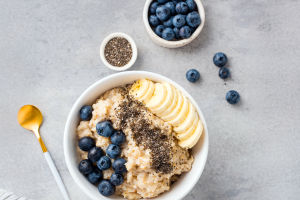Home cooking doesn't need to be fancy to be impressive. Sometimes, it's the simplest flavor pairings that create the most unforgettable dishes.
If you've ever wondered how a basic pasta, soup, or stir-fry suddenly tastes like a five-star meal, you're likely witnessing the power of smart ingredient pairing.
Let's explore how combining certain common ingredients can unlock deep, rich, and layered flavors — without needing anything exotic or expensive.
Why Pairing Matters
Great food isn't just about having good ingredients — it's about how they work together. The science of taste (and a bit of intuition) tells us that certain ingredients complement each other because of shared or contrasting flavor compounds. Chefs often call these "magical pairs." But you don't need a culinary degree to use this trick in your own kitchen.
1. Tomato + Basil: The Comfort Duo
Why it works:
Tomato is rich in umami, while basil brings freshness and slight sweetness. Together, they strike a perfect balance — savory yet light.
Use it like this:
• Toss chopped fresh basil into warm tomato soup.
• Add both to a grilled cheese sandwich.
• Use in homemade marinara or pizza sauce.
2. Garlic + Lemon: Bright and Bold
Why it works:
Garlic gives depth; lemon adds acidity. The brightness of citrus lifts the heaviness of garlic, making dishes feel lighter but still satisfying.
Try it in:
• A quick sautéed green bean or broccoli dish.
• Roasted chicken thighs with garlic, lemon slices, and herbs.
• Salad dressings that need a kick.
3. Onion + Thyme: Earthy and Aromatic
Why it works:
Onions bring a natural sweetness when cooked down, and thyme adds a deep, earthy fragrance. They support each other without overpowering.
Use them in:
• A slow-cooked stew or soup base.
• Caramelized onion and thyme tart.
• Mushroom dishes — this combo enhances umami.
4. Soy Sauce + Honey: Sweet and Savory Fusion
Why it works:
Sweet meets salty — the honey smooths out the sharp edges of soy sauce, while soy adds depth and umami.
Ideal for:
• Glazes for roasted carrots, tofu, or salmon.
• Quick stir-fry sauces with garlic and ginger.
• Marinades for baked or grilled vegetables.
5. Cinnamon + Sweet Potato: Warm and Comforting
Why it works:
Both ingredients have a natural sweetness, but cinnamon's warmth elevates the starchy texture and brings out the potato's nutty flavors.
Delicious ideas:
• Roasted sweet potato wedges with a sprinkle of cinnamon and sea salt.
• Cinnamon-sweet potato mash with a hint of butter and nutmeg.
• Add to pancakes or muffins for a subtle twist.
How to Build Your Own Flavor Pairings
If you want to experiment beyond these examples, consider these rules:
1. Balance intensity: Don't pair two extremely strong flavors unless they're meant to contrast.
2. Use opposites: Acidic + fatty (like lemon and avocado) often works.
3. Think about texture: Crunchy and creamy often complement each other well.
4. Smell before cooking: If the two ingredients smell good together raw, they likely cook well too.
5. Build on classics: Start with proven pairs (like those above) and add one new element at a time.
Small Tweaks, Big Results
You don't need a new recipe to improve your home-cooked meals — just a new mindset. Think of cooking like creating music: every ingredient is a note. When those notes harmonize, the results are memorable.
Next time you're in the kitchen, instead of grabbing whatever is closest, ask yourself: "What flavors would lift this dish up?" With just one thoughtful pairing, a plain weekday dinner can become something you crave.
Have you discovered any surprisingly good combinations while cooking? Or is there a flavor you're always trying to enhance? Share your kitchen discoveries — you might inspire someone else's next magical meal!


